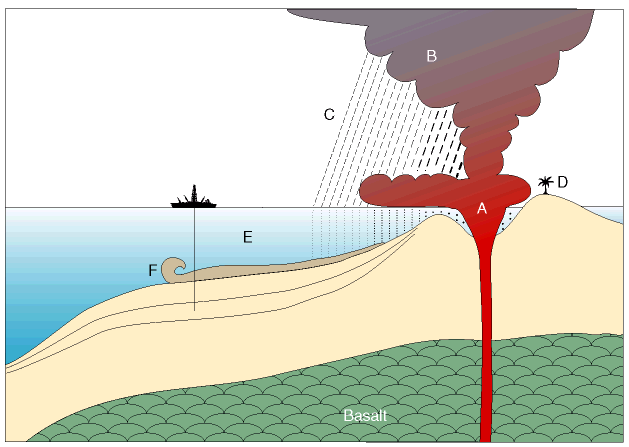
Figure 22. Schematic interpretation of the eruptive setting of the volcaniclastic rocks at Site 1184. These reworked pyroclastic deposits probably formed on top of a large seamount as it grew to within ~200 m of the sea surface. The presence of basalt at depth is conjectural. A = the presence of blocky, nonvesicular glass shards, suggests fragmentation of rapidly quenched magma in hydromagmatic eruptions under shallow water; abundant tachylite clasts in parts of the succession suggest that this process occurred in an environment that was at times subaerial. B = accretionary and armored lapilli form in the atmosphere, in steam-rich columns of volcanic ash. C = the absence of blocks, bombs, or lapilli >20 mm suggests that the primary pyroclastic deposits did not form close to the eruption center(s). D = wood fragments found at the bases of four of the five subunits indicate proximity to land. E = deposition or redeposition of the volcaniclastic material in a marine setting is indicated by the presence of nannofossils throughout the unit. F = redeposition by turbidity currents is suggested by the presence of rip-up clasts and broken accretionary lapilli and by the absence of the layering that would be expected from material settling through water.
